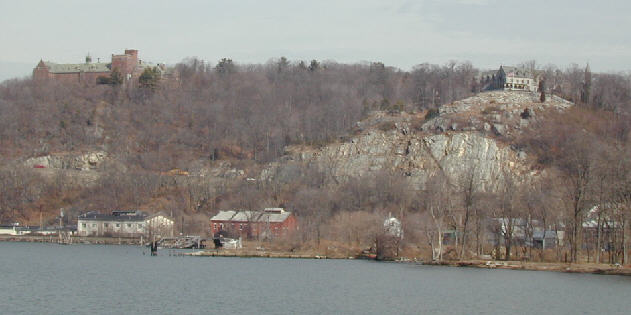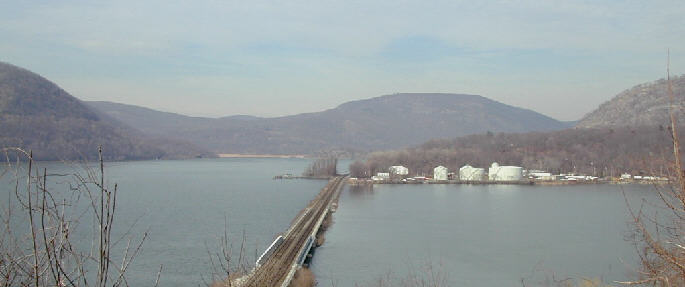PEEKSKILLNEW YORK |
 |
PEEKSKILLNEW YORK |
 |

On March 23, 1777, 500 British troops disembarked from 10 ships sent up the Hudson to attack the storehouse at Peekskill. 250 American troops manned the storehouse at Peekskill under the command of Alexander McDougall. McDougall withdrew into the town and asked for support from Fort Montgomery across the river. Col Marinus Willett arrived with 80 men and with the General's permission led an attack on the British who were burning military supplies. Willett fired on the British and charged with bayonets forcing the British to retreat.
On June 24, 1781, Washington set up camp in Peekskill and waited for French forces that left Newport, RI on June 9th under the command of General Rochambeau. When the French arrived, the combined armies performed exercises and demonstrations to intimidate the British in New York City. However, Washington and Rochambeau decided that a larger force would be necessary to lay siege to the city. Instead, Washington abandoned his efforts in New York and took half of his forces and the French forces to surround and overwhelm Cornwallis in the south. Clinton in New York would not figure out what Washington was up to for over two weeks and would not send a force out to rescue Cornwallis for another month. Clinton was informed of the surrender enroute and turned back to New York City.
Today, there’s a beautiful park on the Hudson at Peekskill. From the park, to the north, you can see where the Hudson squeezes through the Highlands. On the west side of the Hudson was Fort Clinton and Fort Montgomery. On the east side was Fort Independence.

First Chain Marker -- The first chain placed across the Hudson to keep the British from advancing north up the river. Fort Montgomery protected the chain on the west side of the Hudson. Although this chain did not stop the British, a second chain placed at West Point presented a formidable obstacle.
| The First
Chain
Planned to keep British ships from going up river, anchored on shore below, was forced by the enemy, Oct 7, 1777. State Education Department 1932 (Route 9D Marker) |
|
Arnold’s Flight Marker -- It was near this point on the Hudson that Benedict Arnold rowed out to the British ship, the “Vulture,” to officially become an American traitor.
| Arnold’s
Flight
At Beverley Dock, at the foot of this lane, Arnold, exposed as a traitor, fled by boat to the British ship Vulture, off Croton Point. Putnam County Historical Society (US Route 9D Marker) |
|
